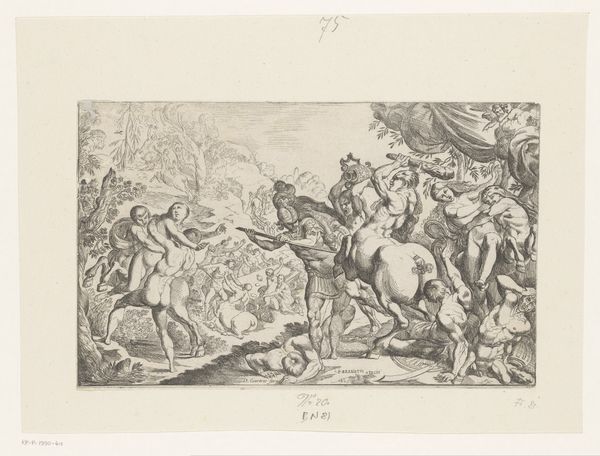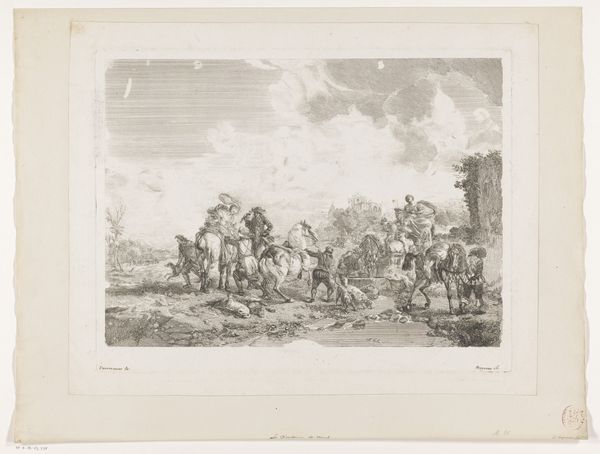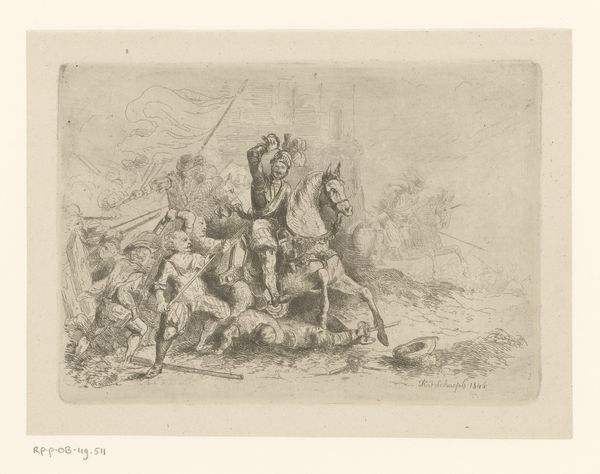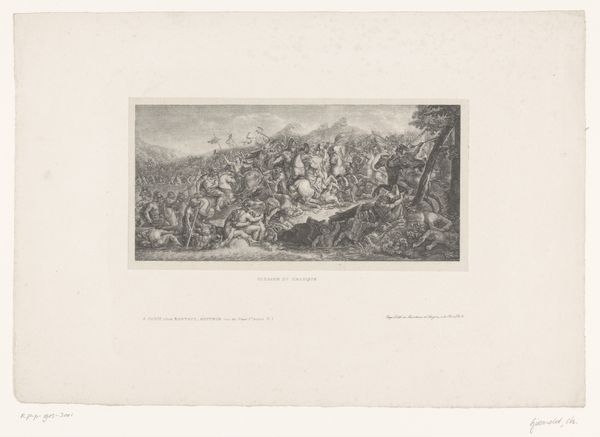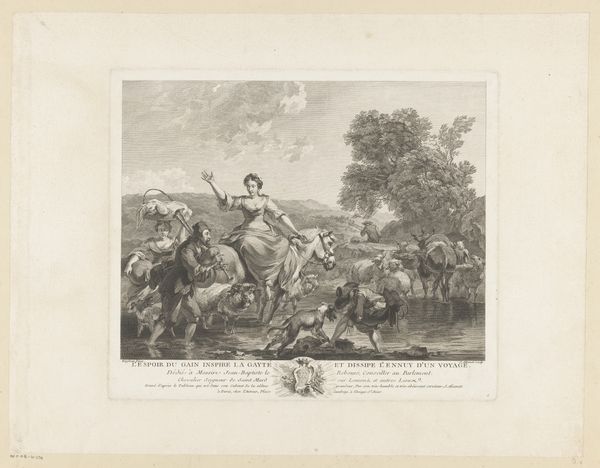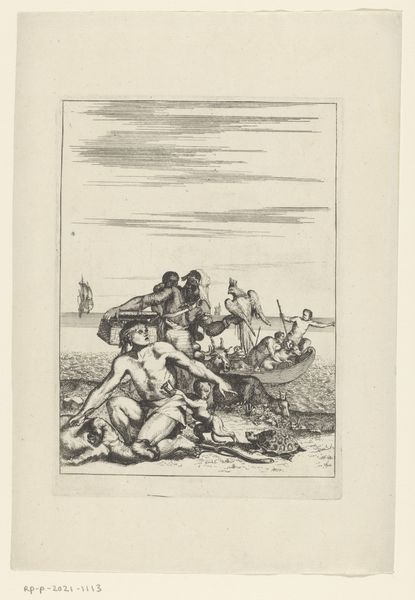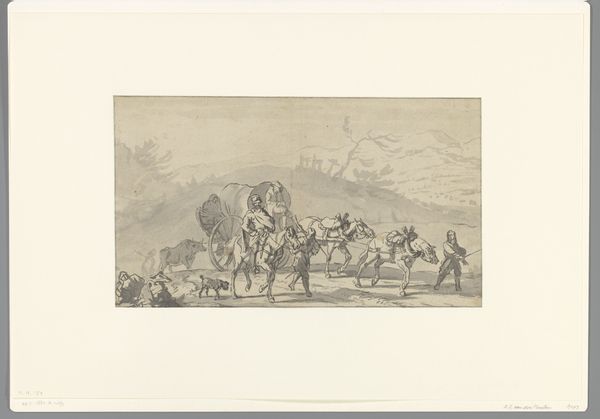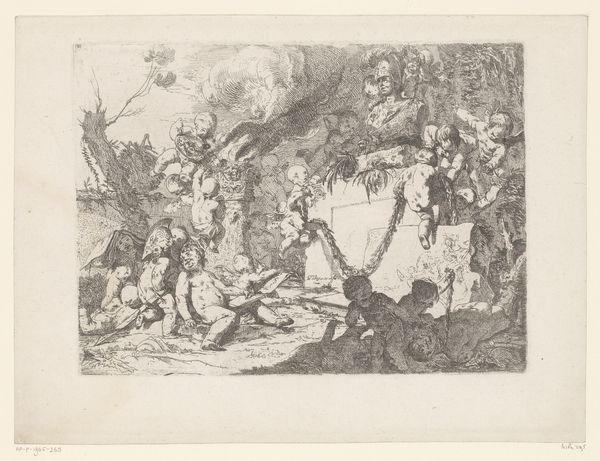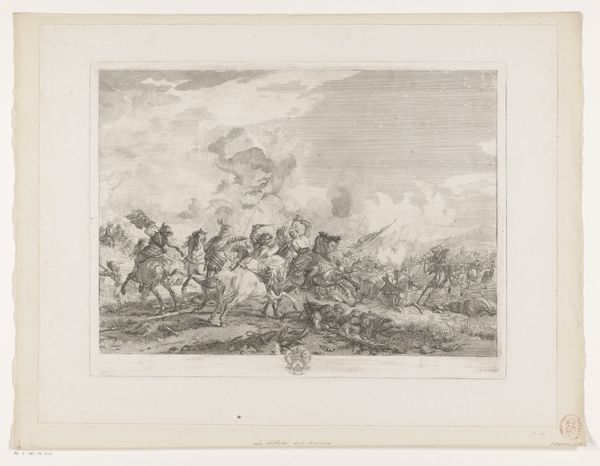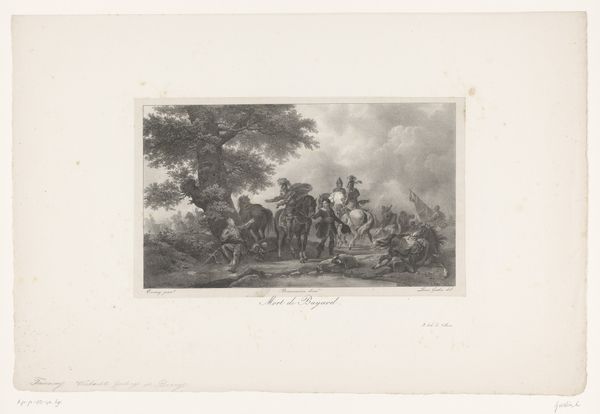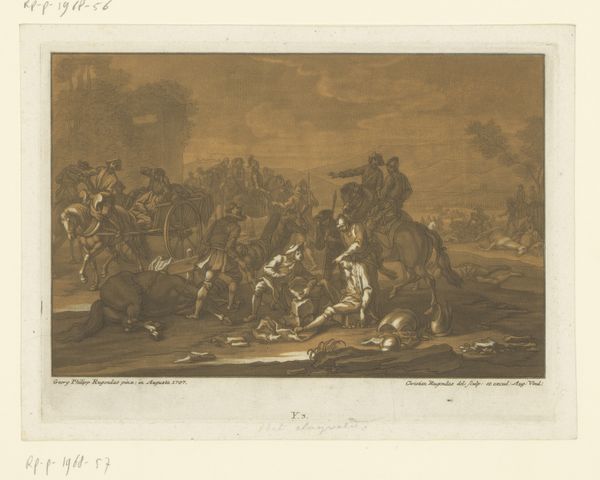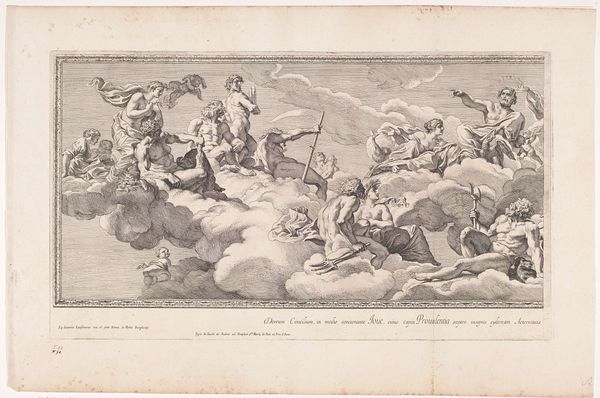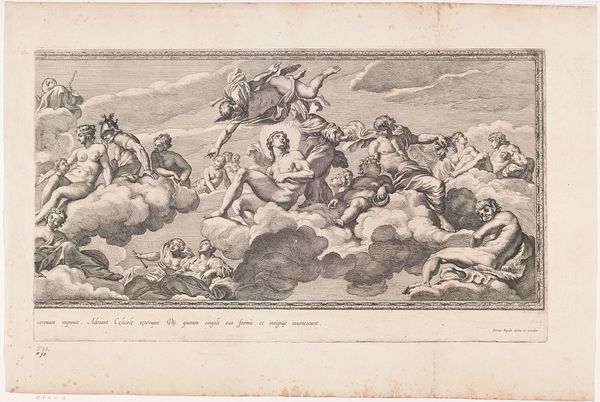
print, engraving
#
baroque
# print
#
figuration
#
line
#
history-painting
#
engraving
Dimensions: height 167 mm, width 217 mm
Copyright: Rijks Museum: Open Domain
Curator: This is “Ruitergevecht,” or “Cavalry Battle,” an engraving made by Philibert Benoît de La Rue sometime between 1728 and 1780. It vividly depicts a clash of mounted soldiers. What's your initial reaction to it? Editor: It strikes me as chaotic, but elegantly so. The scene is a maelstrom of bodies, horses rearing, weapons raised, yet there’s a deliberate balance in the composition. What kind of history does a piece like this reflect? Curator: Battle scenes like these were common ways to visualize and commemorate historical events, shaping public perception of conflict. This engraving, reproduced and distributed, reinforced a narrative of valor and perhaps justified military action in a very Baroque fashion. It makes me wonder which historical event or prevailing societal attitude towards warfare this artist wanted to convey through this work. Editor: I see symbols of power and dominance intertwined with fear and brutality. The horses are central. Historically, they often symbolize status and military might, and their prominence here emphasizes the aristocratic nature of warfare at the time. Notice how the plume on each horse head amplifies this? There’s also a subtle symbolism with how the horses are trampling over the fallen figures, a visual representation of the ruthless side of power. Curator: Exactly. Beyond its subject matter, the engraving process itself contributed to the painting’s impact. The precise, detailed lines allowed for mass production and distribution, democratizing access to imagery. It would be interesting to research what its contemporaries thought, because there is an element of propaganda present in pieces such as this. Did the intended audience view this simply as art or were they moved toward a certain outlook of warfare and military events? Editor: The details really do draw you in, even with the grim subject matter. The plumes, the detailed harnesses. Even the contorted expressions of pain etched on the faces are full of symbolical storytelling. You can feel the weight and desperation of each fallen man, each swipe of the blade. I find the raw humanity incredibly potent and gripping. Curator: Indeed, by delving into both the visual and historical context of "Cavalry Battle", we gained valuable insight into the social, political, and artistic narratives of the period. It showcases how art could serve as a mirror reflecting contemporary beliefs and sometimes influence the society it inhabits. Editor: This artwork prompts reflection on the human experience in war, using images and their emotional weight to connect us with both the past and our understanding of visual rhetoric.
Comments
No comments
Be the first to comment and join the conversation on the ultimate creative platform.

